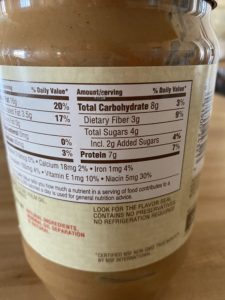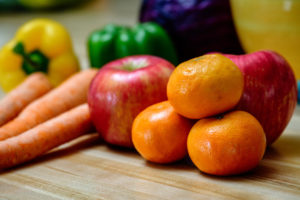Added sugar is found everywhere.
Seriously. Everywhere. Food companies sprinkle it on everything and rarely can you find a boxed product with zero added sugar.
But that’s so cruel! Why would companies want to add it to everything?!
While there is no nutritional benefit to added sugar in foods (unless you’re an athlete!), it does help them taste better and can help preserve the flavor and color as well. You’re going to find the most added sugar in things like soda, candy, desserts, and foods with a long shelf life. I really don’t think the food industry is out there trying to make us all obese, but they do want their food to taste better and last longer so we will buy it. So they add sugar.
What are the dangers of eating too much sugar?
Increased risks of….
- Depression
- Inflammation and joint pain
- Fatty liver
- Cardiovascular disease
- Type II diabetes
- Kidney damage
- Overweight and obesity
- Dental cavities
Should you cut out all added sugar?
No! That’s not realistic. But we should pay attention to how much we eat and make improvements where we can. Did you know that on average, Americans eat 200-250% of the recommended added sugar limit?
How much is okay?
The American Heart Association recommends limiting added sugar to no more than 24 grams a day for women and 36 grams a day for men. How bout the kids? The American Academy of Pediatrics recommends kids aged 2 and older limit added sugar to no more than 25 grams per day.
So how do you check for added sugar?
Did you know there are a ton of different names for sugar? It’s really easy to miss them on the ingredient list if you don’t know what you’re looking for and it can feel like you’re trying to decipher some secret chemistry code.
Here are some other names for sugar:
Agave nectar, maple syrup, honey, sucrose, fruit juice concentrate, and molasses to name a few. The best way to check for added sugar is on the nutrition facts label. The amount of added sugar has to be listed on the label so you can always find it there. On the photo of a natural peanut butter label below, look where it says “incl. 2g added sugars”. This is where you’ll find the amount of added sugars on your label.
What about the glycemic index?
Shouldn’t we choose sweeteners with a lower glycemic index like brown rice syrup or agave syrup? Shouldn’t we avoid foods with a high glycemic index? Here’s the deal, y’all. You would have to be eating a lot of a sweetener to seriously make a difference in your blood sugar. 1 teaspoon of sugar has 4 grams.
If you’re eating a balanced diet with as many whole foods as you can and few processed foods, you’ll naturally eat foods with a lower glycemic index. Unless you’re adding a lot of sweetener to your foods or are diabetic, I wouldn’t stress about this at all and would instead focus on limiting processed foods most of the time.
Isn’t fruit high in sugar?
This one makes me crazy, you guys. There’s a really big difference between naturally occurring sugars and added sugars. Whole foods containing carbohydrates are considered naturally occurring sugars. These foods are important for us because they fuel our brains and our bodies and produce energy. All carbohydrates are broken down into glucose which is our main source of energy for our cells, brain and other organs, and tissues. Fruit not only provides us with what we need to produce energy, it also has so many important micronutrients that we need along with fiber and we definitely shouldn’t cut it out of our diets.
If you want to sweeten something, should you choose sugar or a sugar alternative? This is really a personal preference. My recommendation would be to use a sugar alternative like stevia which is a natural sweetener that has no affect on your blood sugar.
How can you limit the amount of added sugars in your diet?
- Choose whole foods as much as possible. When you eat fruits and vegetables as your sides and snacks, you aren’t going to be getting the added sugar you would from a boxed snack cake.
- Limit processed foods with a long shelf life. This doesn’t mean to avoid them altogether, but limiting them will help reduce your intake of added sugar.
- Choose sugar-free beverages.
- If you’re craving something sweet, try a snack with some carbs and protein first and reassess. A perfect snack would be a Greek yogurt with berries or an apple with almonds to give you that sweet flavor and help fill you up.
- Choose the sweets that you love most and limit the rest.





